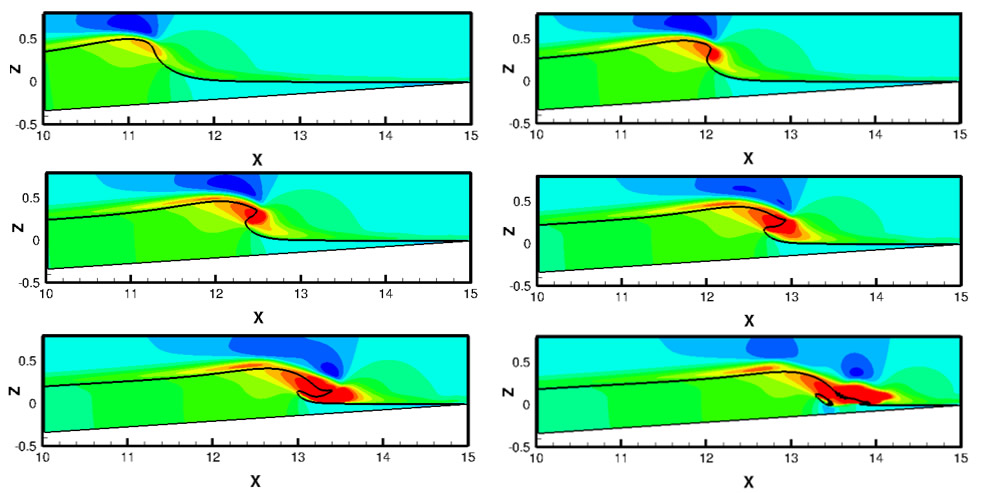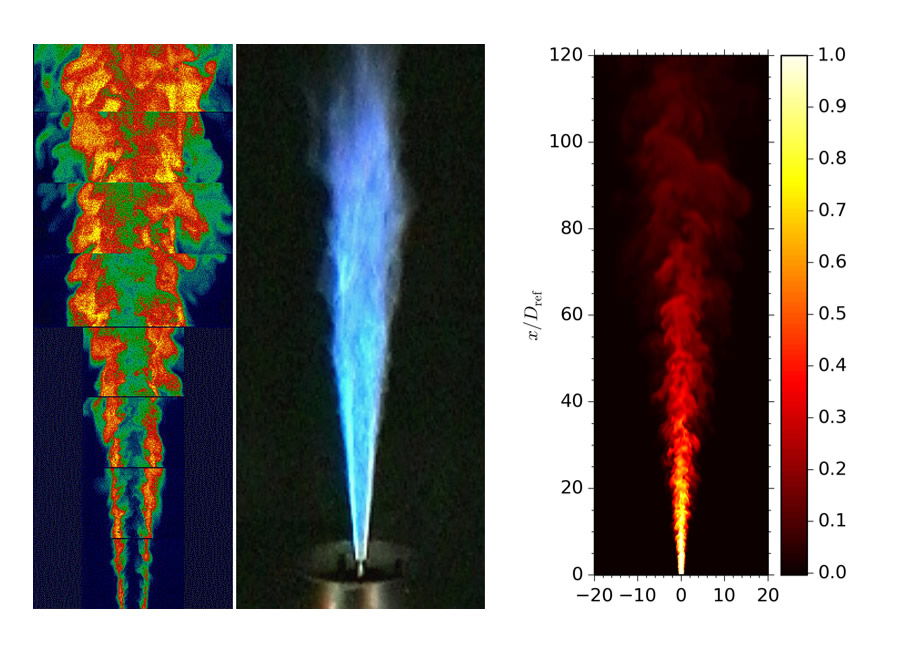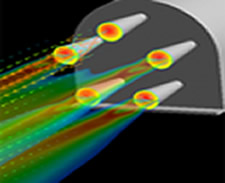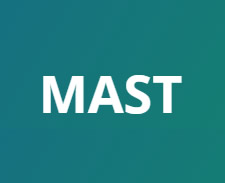Computational Fluid Dynamics
CAVS is solving real world problems through dedicated research and development of advanced computational modeling, simulation, and design of physical systems.
Aeroacoustics and LES
Led by Dr. Adrian Sescu, a CAVS research group is focusing on fundamental research on topics in aeroacoustics, transition in boundary layers, and synthetic turbulence modeling for both large and direct numerical simulations. To learn more, click the link below:
Multi-phase Flow
Dr. Shanti Bhushan and computational engineers at CAVS are researching simulations of plunging breaking waves to better understand turbulence generation at the air-water interface. The research focuses on the simulation of solitary plunging breaking waves to run up a slope using OpenFOAM and ERDC solver Proteus.
Bradley Chambers and Shanti Bhushan, Numerical Simulations Of Plunging And Surging Wave Breaking Using Openfoam, Proceedings of the Sixteenth Annual Early Career Technical Conference, November 4 - 5, 2017 - Birmingham, Alabama USA.

Streamwise velocity distribution for plunging breaking wave
Turbulence Modeling
Along with CAVS computational engineers, Dr. Shanti Bhushan is involved in the development of advanced turbulence model for CFD simulations. To learn more, click the link below:
Turbulent Reacting Flows
Dr. Yu Lv is developing predictive physical models and high-order accurate numerical methods for high-fidelity simulations of turbulent combustions, with relevance to applications of IC, jet and rocket engines. The ongoing studies include development of more efficient computational framework using the modern heterogeneous computers and high-order discontinuous finite-element schemes.

References
- Ma, P. C., Lv, Y., and Ihme, M., An entropy-stable hybrid scheme for simulations of transcritical real-fluid flows, Journal of Computational Physics, 2017, vol. 340, pp. 330-357.
- Lv, Y. and Ihme, M., High-order discontinuous Galerkin method for applications to multicomponent and chemically reacting flows, Acta Mechanica Sinica, vol. 33, 2017, pp. 486-499.
- Lv, Y., and Ihme, M., Computational analysis of re-ignition and re-initiation mechanisms of quenched detonation waves behind a backward facing step, Proceedings of the Combustion Institute, 2015, vol. 35, pp. 1963-1972.
- Lv, Y., and Ihme, M., Entropy-bounded discontinuous Galerkin scheme for Euler equations, Journal of Computational Physics, 2015, vol. 295, pp. 715-739.
- Lv, Y., and Ihme, M., Discontinuous Galerkin method for multicomponent chemically reacting flows and combustion, Journal of Computational Physics, 2014, vol. 270, pp. 105-137.
- Wu, H., Ma, P. C., Lv, Y., and Ihme, M., MVP-workshop contribution: Modeling of Volvo bluff body flame experiment, AIAA 2017-1573, 2017.
Energetics
Dr. Xiao Wang and her team of computational engineers at CAVS have conducted research on both traditional CFD simulations, such as aircraft, turbomachinery, and marine propeller, and novel CFD applications of biosystem, including flows of human lung airway and aortic coarctation. To learn more, click the link below:
Fluid Structure Interaction
Manav Bhatia’s research focuses on the development of computational methods for large-scale multiphysics systems exhibiting complex nonlinear dynamic phenomena, particularly involving fluid-structure interactions. In addition to the development of efficient predictive methods based on advanced finite-element discretizations, sensitivity analysis procedures are also investigated to enable gradient-based design-optimization of engineering systems. Dr. Bhatia is the developer of MAST that is an open-source toolkit for analysis and design of nonlinear multiphysics systems.

References
- Bhatia, M. and Livne, E., Design-Oriented Thermostructural Analysis with External & Internal Radiation, Part I: Steady State, AIAA Journal, Vol. 46, No. 3, March 2008, pp. 578-590
- Bhatia, M. and Livne, E., Design-Oriented Thermostructural Analysis with External & Internal Radiation, Part II: Transient Analysis, AIAA Journal, Vol. 47, No. 5, May 2009, pp. 1228-1240
- Stanford, B. K., Beran, P. S., and Bhatia, M., Aeroelastic Topology Optimization of Blade-Stiffened Panels, 2014, Journal of Aircraft, Vol. 51, No. 3, pp. 938-944
- Bhatia, M., and Beran, P. S., h-Adaptive Stabilized Finite Element Solver for Calculation of Gener- alized Aerodynamic Forces, 2015, AIAA Journal, Vol. 53, No. 3, pp. 554-572
- Bhatia, M. and Beran, P. S., Design of Thermally-Stressed Panels Subject to Transonic Flutter Constraints, 2017, Journal of Aircraft, Vol. 54, No. 6, pp. 2340-2349
- Bhatia, M. and Beran, P. S., Transonic Panel Flutter Predictions Using a Linearized Stability Formulation, 2017, AIAA Journal, Vol. 55, No. 10, pp. 3499-3516
- Bhatia, M. and Beran, P. S., High-Order Transonic Panel Flutter Predictions, 2017, AIAA Journal, Vol. 55, No. 11, pp. 3881-3890
Biofluids
At CAVS, Dr. Greg Burgreen and his team of computational engineers are using CFD to simulate and improve novel medical therapies for both adults and children. Our research has been instrumental in the awarding of several US and international patents on biomedical devices. Projects include drug delivery in advanced models of diseased human lungs, cardiovascular artificial organ development, involving ventricular assist devices (artificial hearts) and oxygenation devices (artificial lungs), and state-of-the-art models of blood damage and thrombosis

References
- Walters DK, Burgreen GW, Hester RL, Thompson D, Pruett WA, Wang X. (2014). Cyclic Breathing Simulations in Large-Scale Models of the Lung Airway From the Oronasal Opening to the Terminal Bronchioles. ASME Journal of Fluids Engineering 136(10):1-10. doi:10.1115/1.4027485.
- Madhani SP, Frankowski BJ, Burgreen GW, Antaki JF, Kormos R, D'Cunha J, Federspiel WJ. (2017) In vitro and in vivo evaluation of a novel integrated wearable artificial lung . Journal of Heart and Lung Transplantation 36(7):806-811.
- Majumdar S, Patil CN, Ladner-Threadgill T, Randolph E, Burgreen GW, Kermode JC. (2017) Platelet activation and erythrocyte lysis during brief exposure of blood to pathophysiological shear stress in vitro. Clin Hemorheol Microcirc. doi: 10.3233/CH-170256.
CFD Software Forum
CFD Modeling and Simulation Research at the Center for Advanced Vehicular Systems (CAVS) seeks to promote the overall mission of CAVS through research and development of advanced computational modeling, simulation, and design of physical systems to solve real world problems. Our research efforts use an application-driven and team-oriented approach to perform basic and applied research on complex industrially relevant engineering problems. To visit the CFD Software Forum, click the link below:





